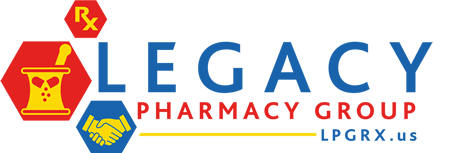Vickie Andros is well aware of the financial obstacles independent pharmacists face today. In her current role as product manager for RelayHealth, she hears from pharmacists every day about what’s helping or hurting their business. She also knows firsthand how it feels to navigate those financial complexities as a former pharmacist herself.
The need to continuously deliver better care, lower costs, and collaborate with PBMs and payers is a tall order. In this edition of
Pharmacist to Pharmacist, we asked Andros about the biggest financial challenges independent pharmacists are tasked with today—and got her advice on how to overcome them.
What are you responsible for in your role?
Andros: I’m the product manager for RelayHealth products such as
REMS, NotifyRx and RxSafety Advisor. Each day varies a bit, but I’m responsible for overseeing the financials and support for those products. I communicate with either our sales teams or manufacturers to get feedback from pharmacies on our products.

What are the biggest challenges independent pharmacists face?
Andros: The top three are increased direct and indirect remuneration (DIR) fees, decreased
reimbursements and keeping up with performance metrics. In general, pharmacists want to know how they can help improve outcomes for their patients and work with pharmacy benefit managers (PBMs) to lower fees and increase reimbursements. And performance metrics are adding more pressure to the mix. For some independent pharmacies, the metrics are getting harder and harder to meet. These hurdles are forcing independents to look at other ways to generate revenue.
How can independent pharmacists reduce DIR fees and improve reimbursements?
Andros: Setting up your pharmacy to offer additional services is one of the best things you can do. You want to show PBMs that you’re offering value to your patients. Clinical services like medication therapy management, screenings and immunizations give you chances to gain reimbursement in other areas while improving health outcomes for your patients. But I know it’s still a huge challenge. It’s difficult as an independent pharmacist to challenge PBMs on the fees they charge.
What can independent pharmacists do to better meet performance metrics?
Andros: It may sound obvious, but just being aware of what metrics you’ll be evaluated on is key. It’s also important to be proactive and identify patients who are likely to be nonadherent. What can you do to prevent that? It may include medication synchronization or added prescription counseling. You can also use your
pharmacy management systems or other technology to help identify patients at risk of being nonadherent.
What kind of operational challenges are independent pharmacists facing these days? What tactics can they use to overcome them?
Andros: Managing your workflow and workforce are two ongoing challenges. You’re tasked with adding extra services to bring in more revenue. So the challenge becomes finding the time and the employees to offer those services. You may need to train your workforce or restructure the way your pharmacy’s workflow is set up. This is another area where you can use technology to your advantage. Your pharmacy management system or other solutions can help cross-train your existing staff to offer more services.
What other business strategies can independent pharmacists use to increase revenue?
Andros: Keep a watchful eye on your inventory. You can better manage costs if the incoming inventory goes out in relatively short order. I also recommend
medication synchronization. It’s a way for your patients to get all their medications filled at the same time. This improves medication adherence, which helps improve clinical and financial outcomes. It’s also just more convenient for your patients—that’s a win-win.
How can technology help improve medication and patient safety?
Andros: Currently, most of the pharmacy systems go through First DataBank or other databases for drug utilization reviews. But there are still areas to improve. Using new technology that can help you identify high-risk patients is an easy step. Some systems allow you to gather more in-depth data or ask more questions depending upon the patient. For example, if you have a pregnant patient, just marking that she’s pregnant will trigger additional safety checks and questions you should be asking. The same goes for other high-risk patients.
What are some trends that independent pharmacists should be aware of?
Andros: They should keep an eye on the changing role of pharmacists as they become recognized as healthcare providers. It’s happening—and it means you need to start looking at other ways of reimbursement. Make sure your staff is prepared to offer more services. Start cross-training your staff now to do different tasks, so when the time comes, you won’t fall behind.
Are most pharmacists prepared to expand their role as providers?
Andros: I think most pharmacists are eager to make that transition, because it’s what their training is based on. We went to school for this! And by and large, most are excited to move away from the more frustrating tasks that have become part of their job toward more patient care related activities. Today’s pharmacist has to be on the phone with payers and handle a lot of administrative tasks that likely aren’t their favorite.
What do you think the daily life of a pharmacist will be like five years from now?
Andros: I think you’ll see more pharmacists being acknowledged as healthcare providers. They’ll be seeing patients, and many will be able to prescribe and monitor patients as a physician would. And I think you’ll see technology and automation start to pick up some of the more routine tasks that currently eat up their time.
Related: Learn more about McKesson’s claims and reimbursement solutions for pharmacies



